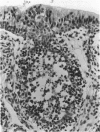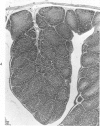Abstract
Chickens maintained from time of hatching to age of 30 days on a diet lacking vitamin A, and on 2 diets lacking vitamin A and other nutritional components showed depletion of lymphocyte and plasma cell populations in nasal, paranasal and bursal lymphoepithelial tissues. Effects were significant with all diets but most severe with the most deprived diet. Infection of these birds with Newcastle disease virus showed further depletion of plasma cells, subnormal inflammatory response, keratinization of bursal epithelia and postsloughing metaplasia of nasal mucociliated epithelia. The bursae of infected chickens on the diet lacking only vitamin A were completely devoid of lymphocytes 6 days after Virus inoculation. Infected chickens on the most deprived diet showed atrophy of areas of intranasal epithelia which indicated failure of basal cells to synthesize replacement cells.
Full text
PDF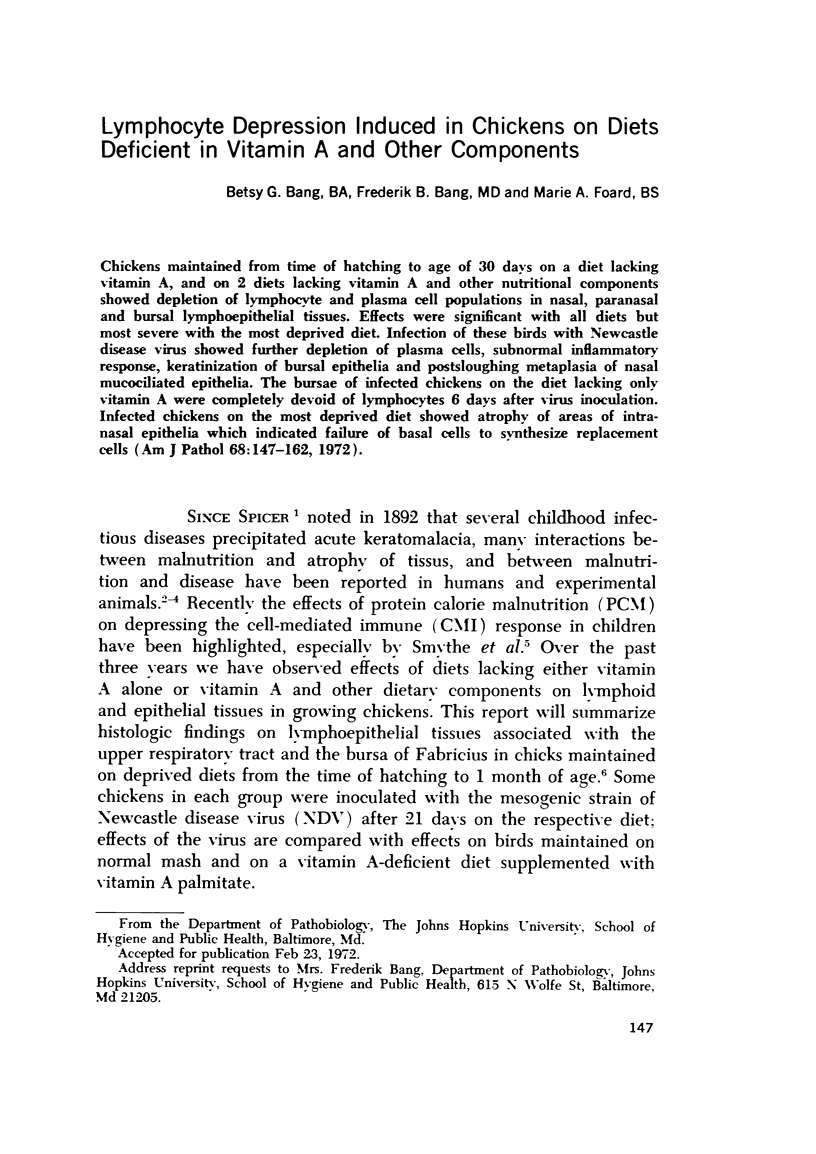
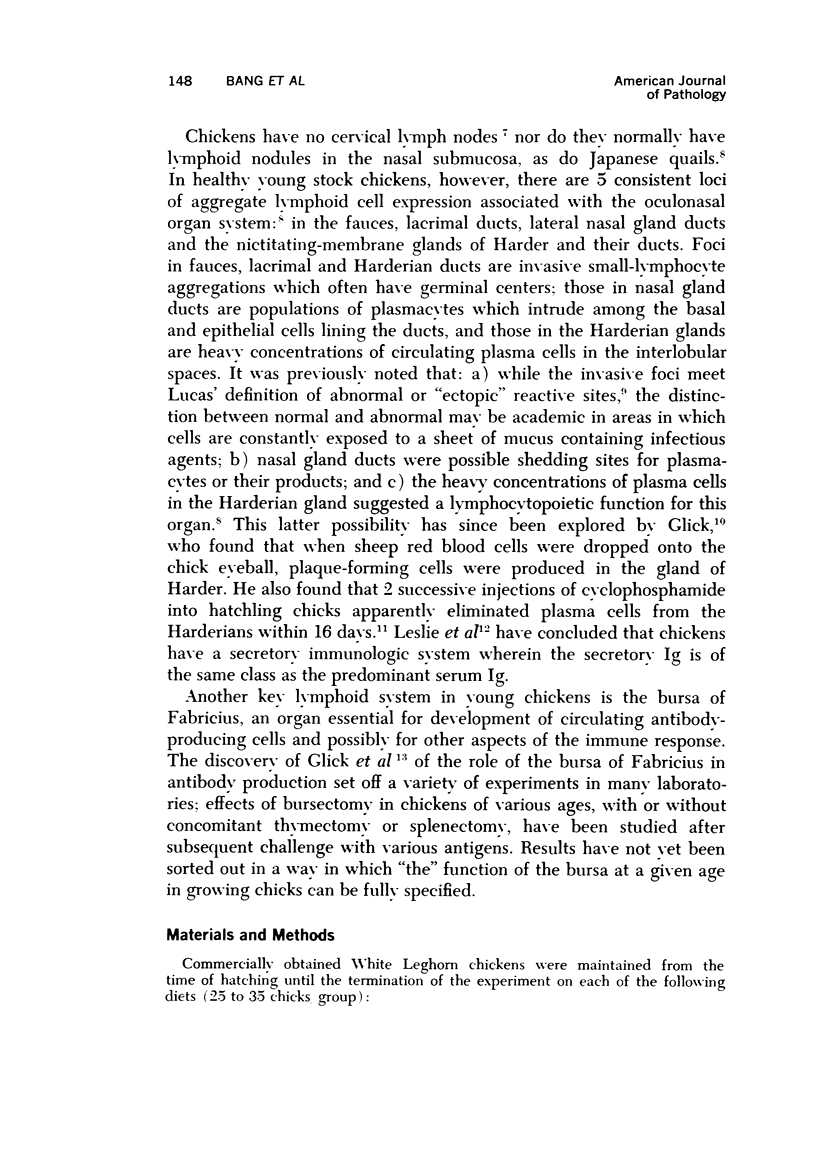
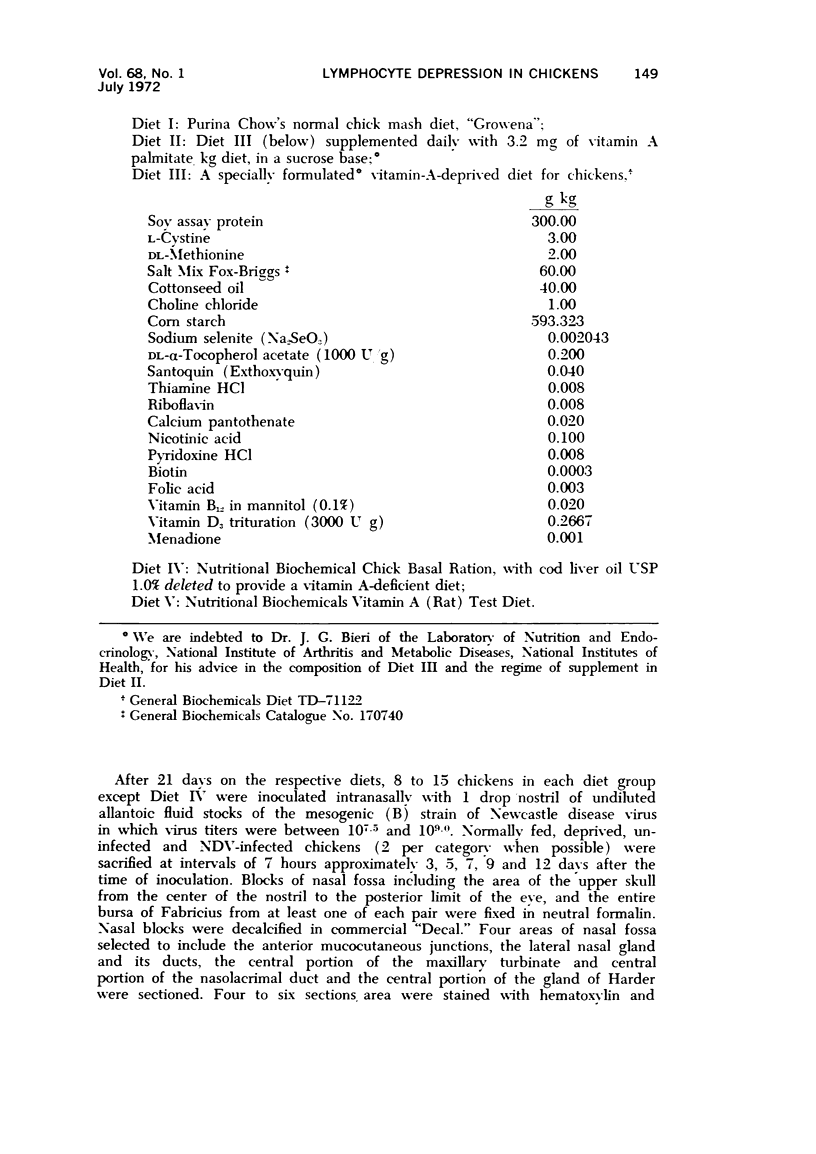
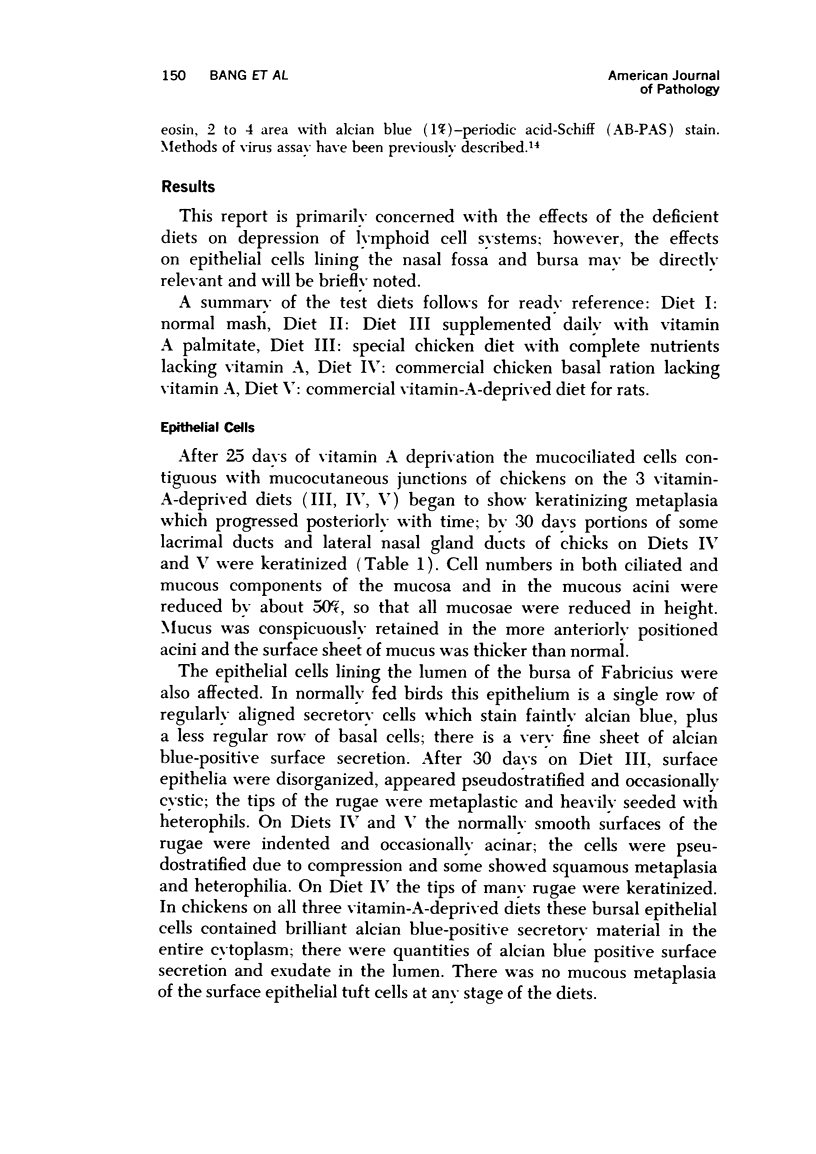
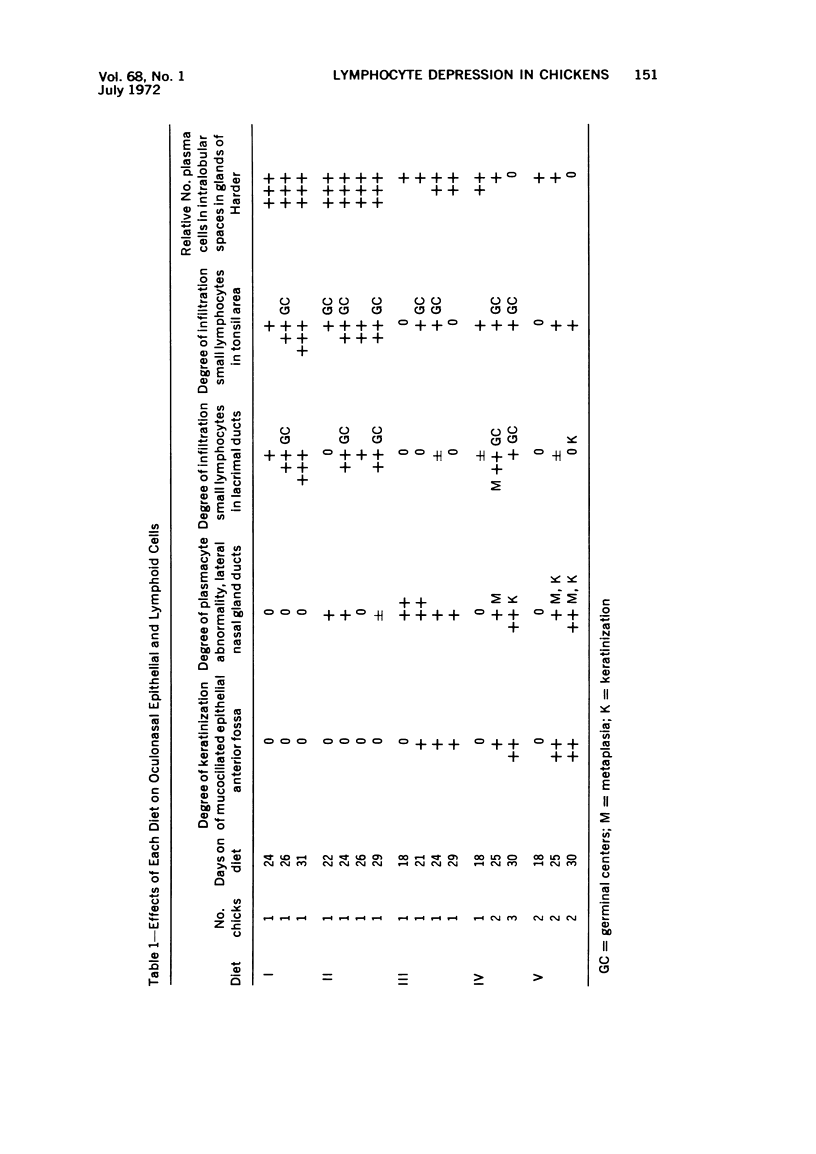
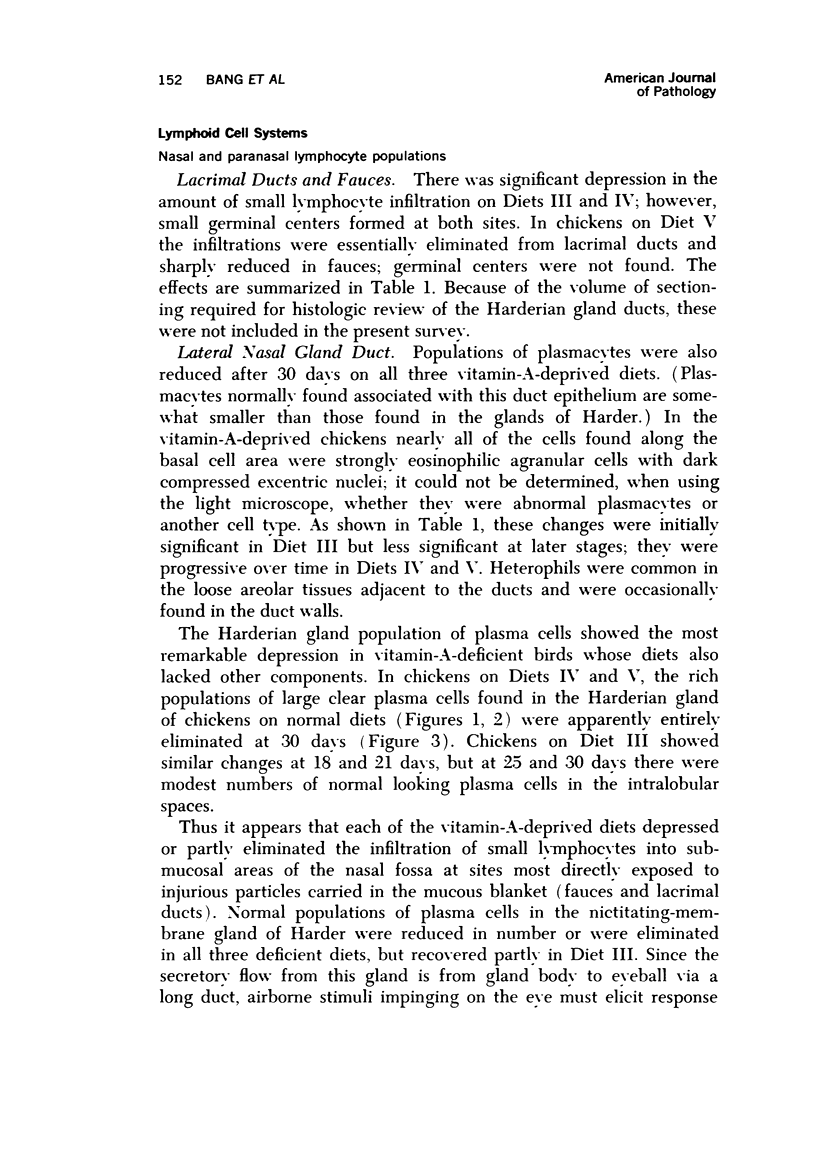
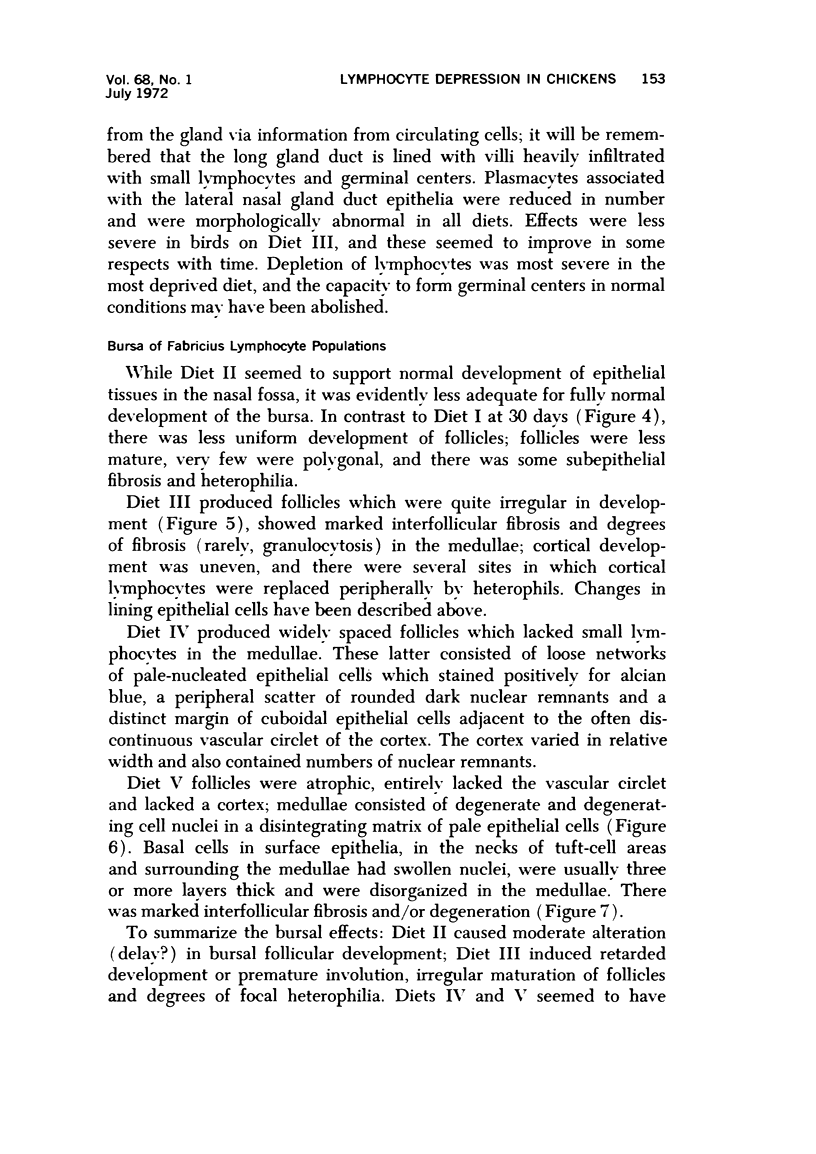
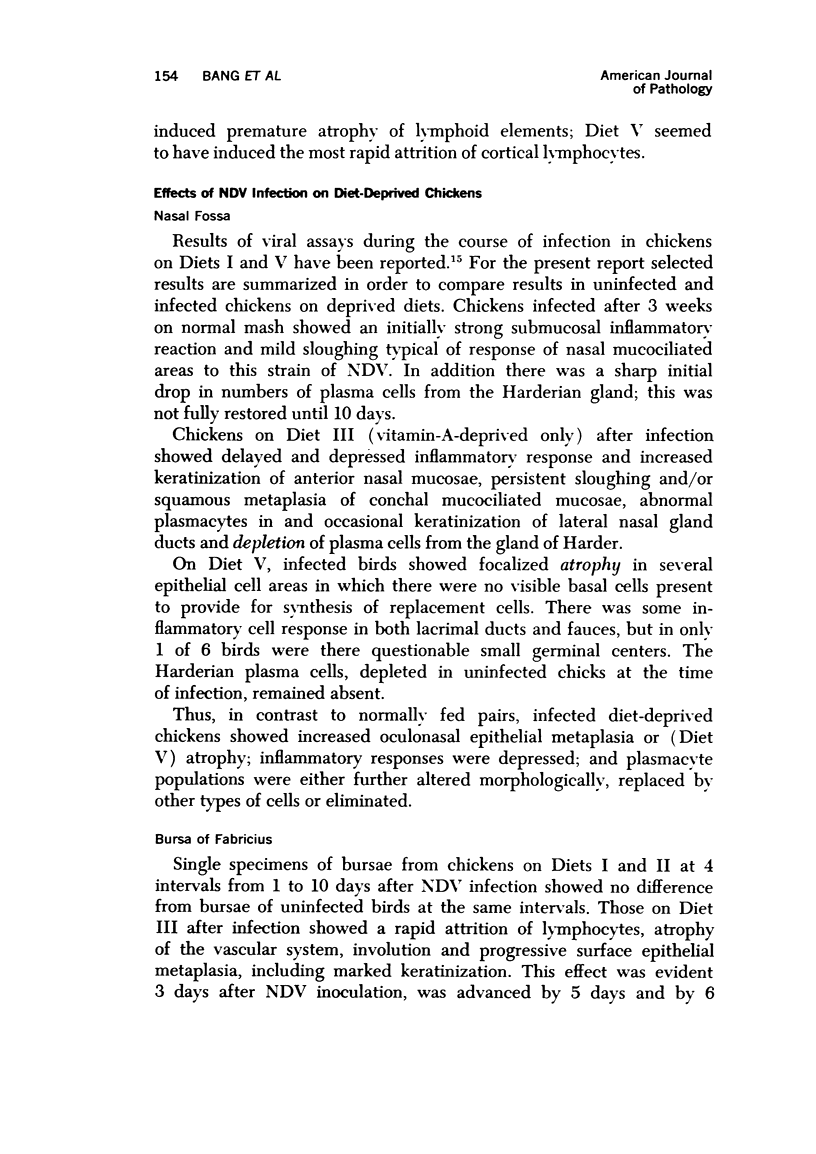
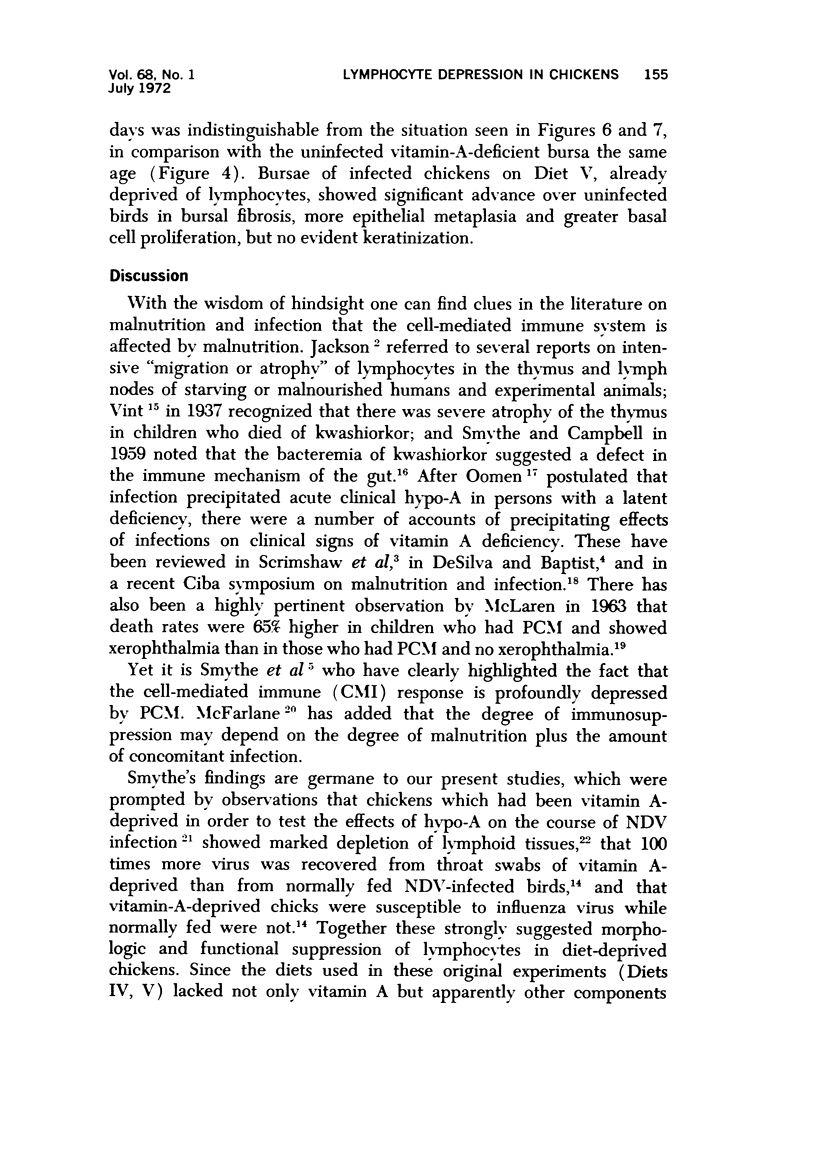
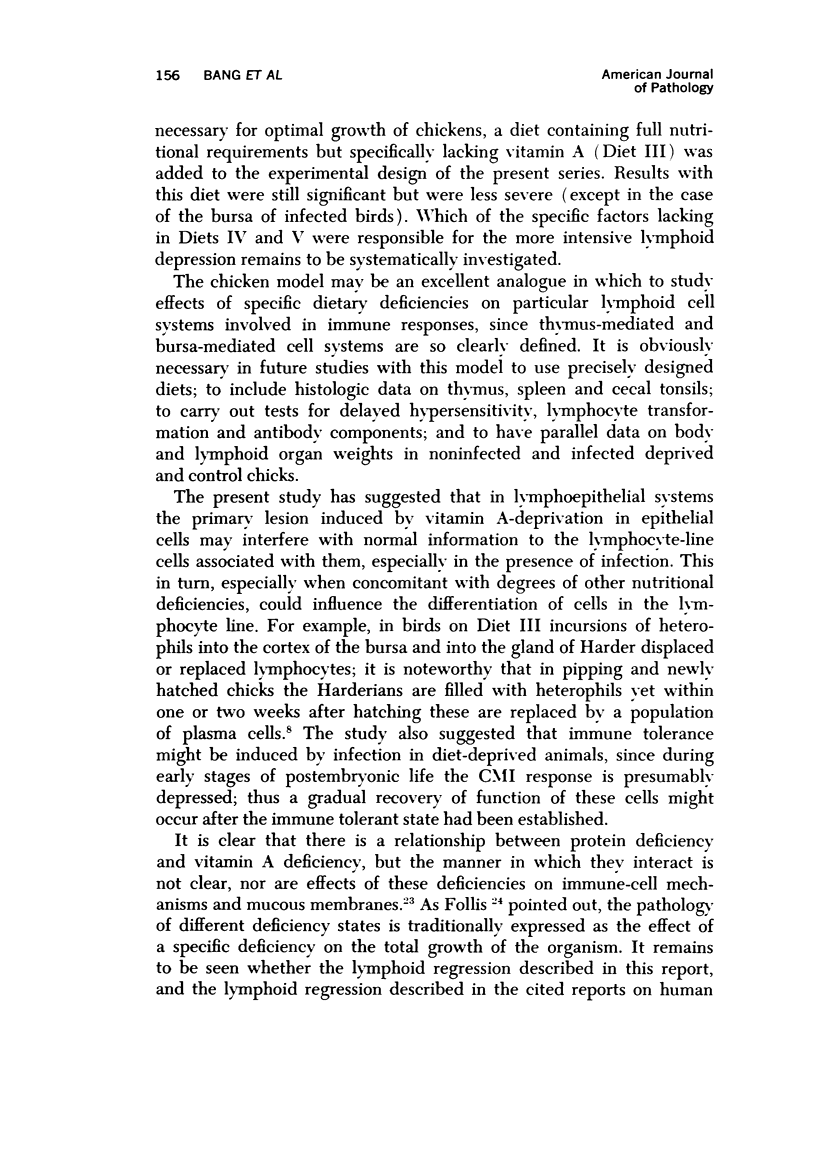
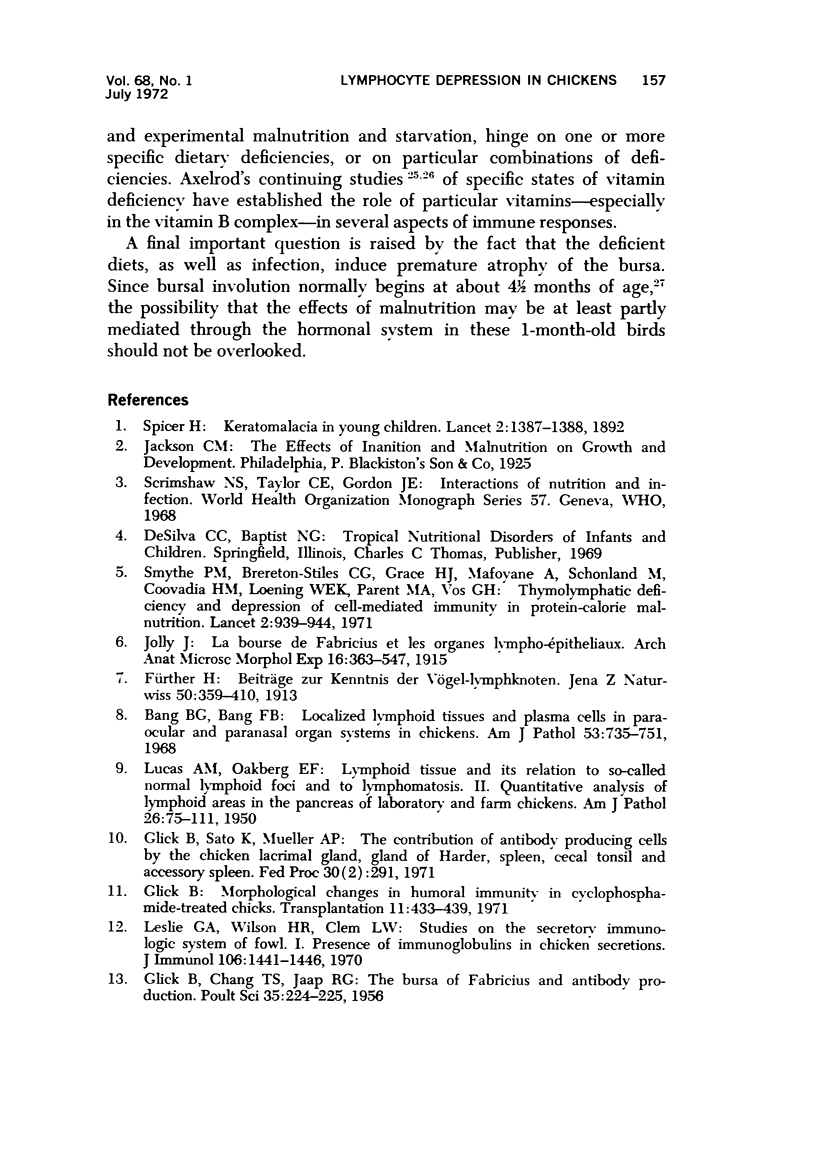
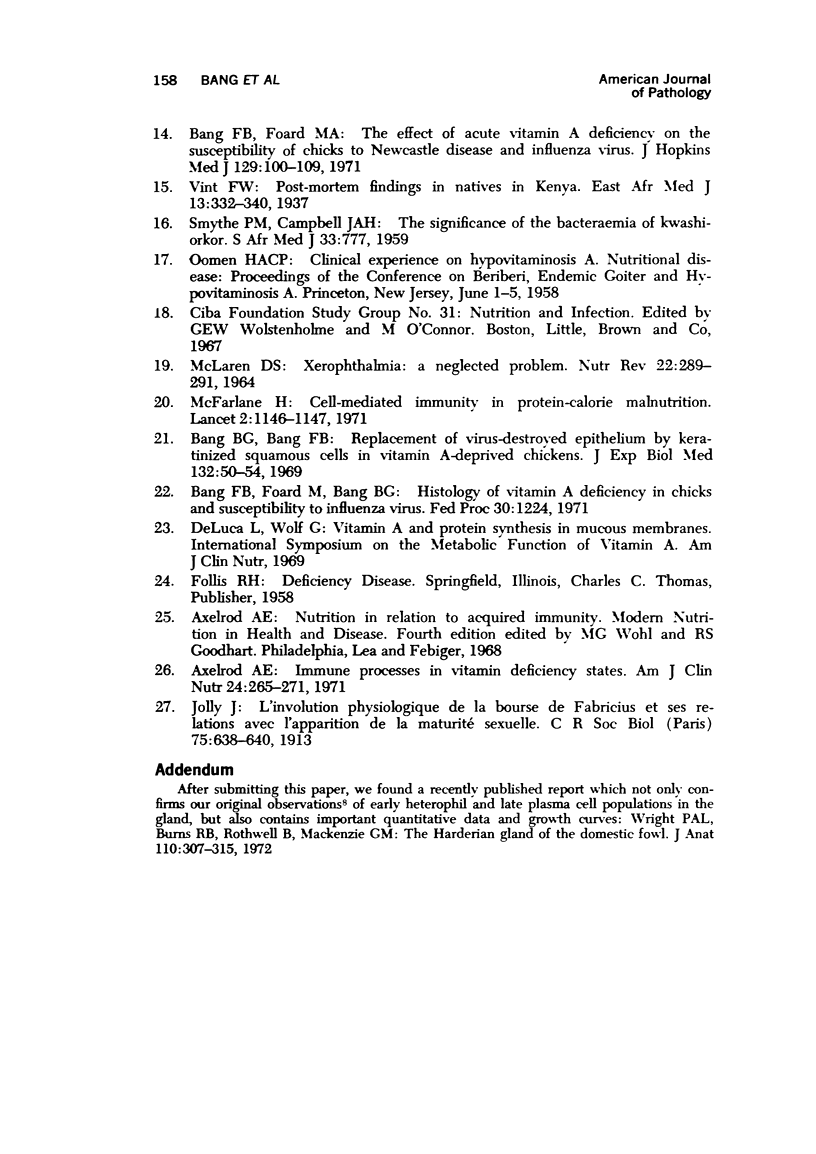

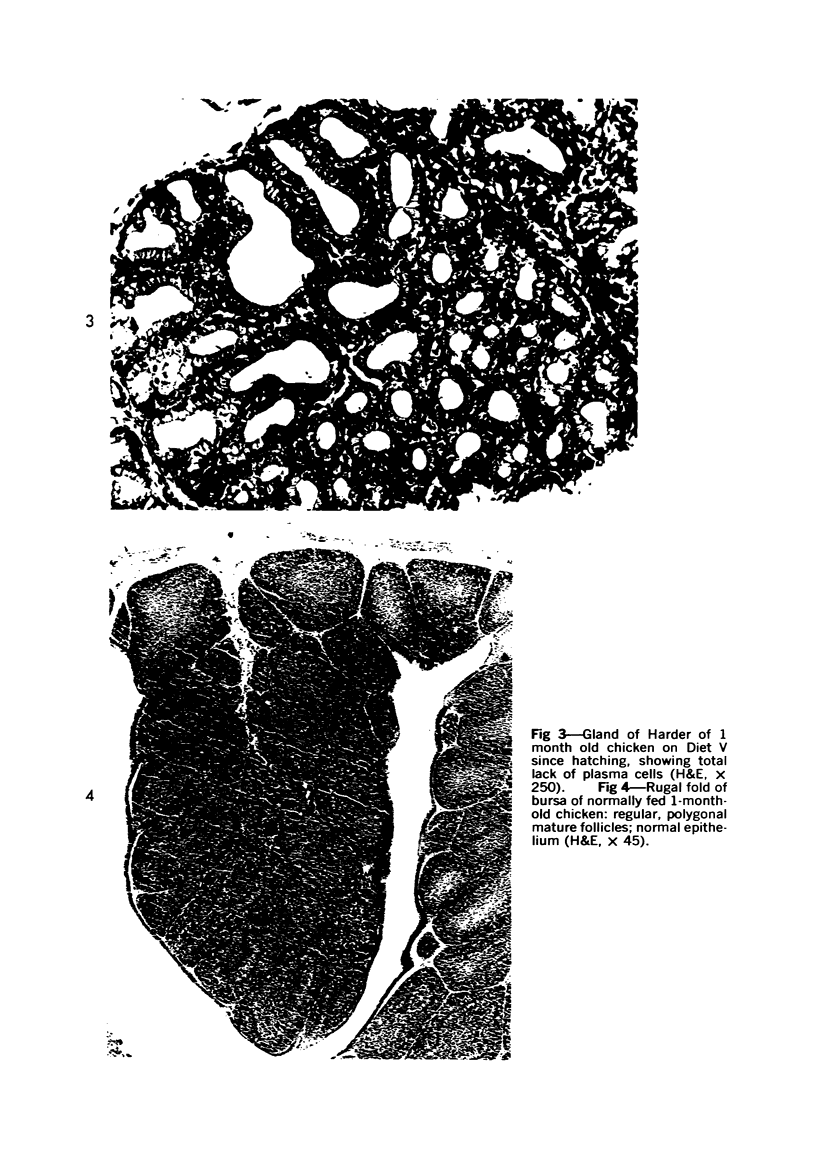
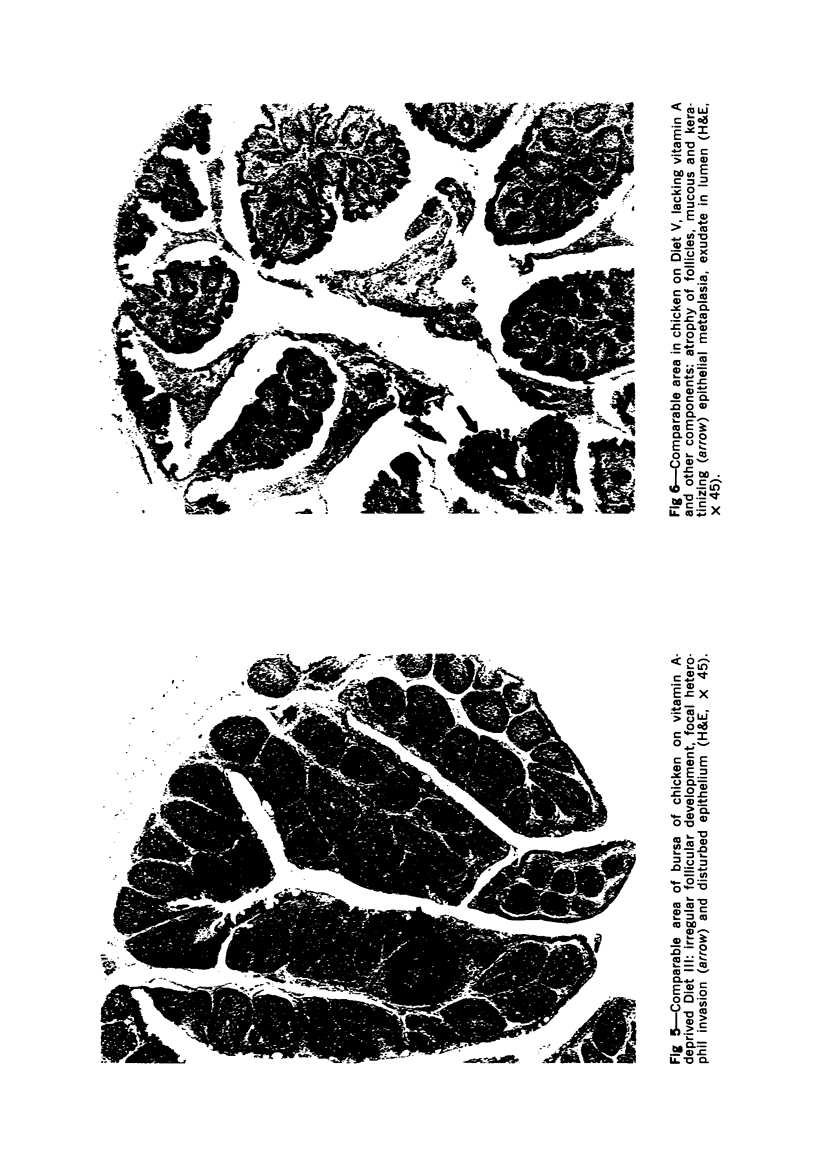
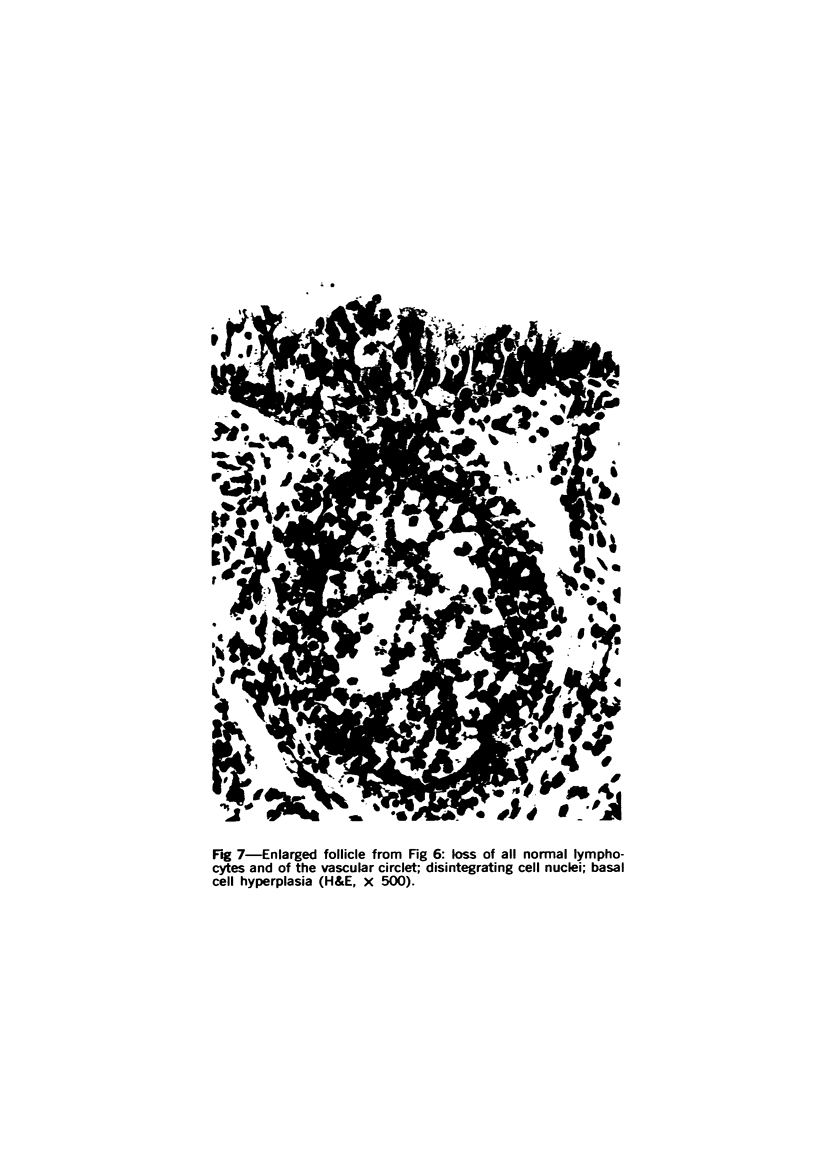
Images in this article
Selected References
These references are in PubMed. This may not be the complete list of references from this article.
- Axelrod A. E. Immune processes in vitamin deficiency states. Am J Clin Nutr. 1971 Feb;24(2):265–271. doi: 10.1093/ajcn/24.2.265. [DOI] [PubMed] [Google Scholar]
- Bang B. G., Bang F. B. Localized lymphoid tissues and plasma cells in paraocular and paranasal organ systems in chickens. Am J Pathol. 1968 Nov;53(5):735–751. [PMC free article] [PubMed] [Google Scholar]
- Bang B. G., Bang F. B. Replacement of virus-destroyed epithelium by keratinized squamous cells in vitamin A-deprived chickens. Proc Soc Exp Biol Med. 1969 Oct;132(1):50–54. doi: 10.3181/00379727-132-34146. [DOI] [PubMed] [Google Scholar]
- Bang F. B., Foard M. A. The effect of acute vitamin A deficiency on the susceptibility of chicks to Newcastle disease and influenza viruses. Johns Hopkins Med J. 1971 Aug;129(2):100–109. [PubMed] [Google Scholar]
- Glick B. Morphological changes and humoral immunity in cyclophosphamide-treated chicks. Transplantation. 1971 May;11(5):433–439. doi: 10.1097/00007890-197105000-00001. [DOI] [PubMed] [Google Scholar]
- LUCAS A. M., OAKBERG E. F. Lymphoid tissue and its relation to so-called normal lymphoid foci and to lymphomatosis; quantitative analysis of lymphoid areas in the pancreas of laboratory and farm chickens. Am J Pathol. 1950 Jan;26(1):75–111. [PMC free article] [PubMed] [Google Scholar]
- Leslie G. A., Wilson H. R., Clem L. W. Studies on the secretory immunologic system of fowl. I. Presence of immunoglobulins in chicken secretions. J Immunol. 1971 Jun;106(6):1441–1446. [PubMed] [Google Scholar]
- MCLAREN D. S. XEROPHTHALMIA: A NEGLECTED PROBLEM. Nutr Rev. 1964 Oct;22:289–291. doi: 10.1111/j.1753-4887.1964.tb07483.x. [DOI] [PubMed] [Google Scholar]
- McFarlane H. Cell-mediated immunity in protein-calorie malnutrition. Lancet. 1971 Nov 20;2(7734):1146–1147. doi: 10.1016/s0140-6736(71)91298-0. [DOI] [PubMed] [Google Scholar]
- SMYTHE P. M., CAMPBELL J. A. The significance of the bacteraemia of kwashiorkor. S Afr Med J. 1959 Sep 12;33:777–777. [PubMed] [Google Scholar]
- Smythe P. M., Brereton-Stiles G. G., Grace H. J., Mafoyane A., Schonland M., Coovadia H. M., Loening W. E., Parent M. A., Vos G. H. Thymolymphatic deficiency and depression of cell-mediated immunity in protein-calorie malnutrition. Lancet. 1971 Oct 30;2(7731):939–943. doi: 10.1016/s0140-6736(71)90267-4. [DOI] [PubMed] [Google Scholar]
- Wight P. A., Burns R. B., Rothwell B., Mackenzie G. M. The Harderian gland of the domestic fowl. I. Histology, with reference to the genesis of plasma cells and Russell bodies. J Anat. 1971 Nov;110(Pt 2):307–315. [PMC free article] [PubMed] [Google Scholar]



